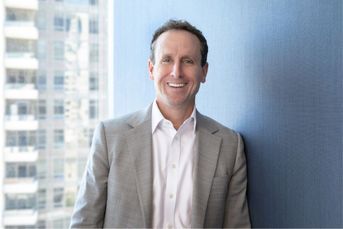Raymond James’ CEO takes a victory lap

Paul Reilly touts the new highs the firm hit in client assets and number of advisers
Senior executives at banks and brokerage firms are loath to compare their firms to the competition, usually from fear of hubris and riling up the competition.
But Paul Reilly, the CEO of Raymond James Financial Inc., took a victory lap Thursday morning, pointing to the firm’s new highs in client assets, number of financial advisers and bank loans.
While he wasn’t beating his chest, Mr. Reilly noted that Raymond James’ recent growth has come at the expense of its four large wirehouse rivals. He made his comments during a conference call with analysts on the firm’s earnings for the quarter that ended in December.
“We’ve had an attractive platform, for a long time, and today, I think leading technology,” Mr. Reilly said in response to a question regarding Raymond James’ success in recruiting. “The [wirehouse] banks, as they have tightened their structures, their payouts, a lot of advisers feel there is less flexibility and they’ve been leaving, not just for us but for other places.”
“The regional firms and us have been the beneficiaries at the cost of the larger wirehouse firms,” he said. “That trajectory has continued.”
Raymond James has been actively recruiting experienced financial advisers while its wirehouse rivals — Merrill Lynch, Morgan Stanley and UBS — decided a few years ago to focus on more on training, technology and increasing the revenue produced by their current rosters of advisers. And all sorts of firms are losing advisers to retirement.
For example, UBS earlier this week reported 6,549 financial advisers in the Americas at the end of 2019, a decline of 301, or 4.4%, year over year. Its advisers, however, generate high revenues, and the firm claims it leads the industry in that category.
Wells Fargo Advisors reported last week that its head count continued to drop at the end of last year, with the firm reporting 13,512 financial advisers at the end of December, a drop of 456 — or 3.3% — over the twelve months of 2019.
Meanwhile, Raymond James is adding advisers to its private client group, which encompasses independent contractor advisers, employees and traditional RIAs. At the end of 2019, the firm had 8,060 financial advisers, an increase of 3% from a year earlier, according to an earnings presentation.
Mr. Reilly said the firm is increasing its market share and pointed to its $442 billion of fee-based assets, which grew 31% last year, as outstripping rivals.
Equity market appreciation “certainly contributed to the growth of client asset metrics,” he said, adding that this “reflects significant increases in market share that have been driven by our consistent, industry-leading strong retention and recruiting of private client group financial advisers.”
“For example, for the firms that have already reported, the year-over-year increases in fee-based assets range from 18% to 23%, well below our year-over-year growth,” Mr. Reilly said.
Learn more about reprints and licensing for this article.








